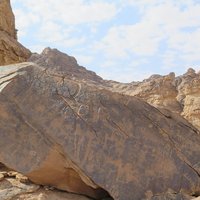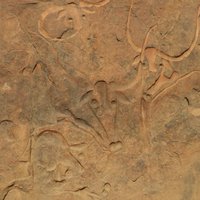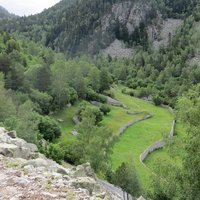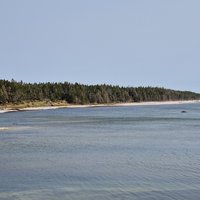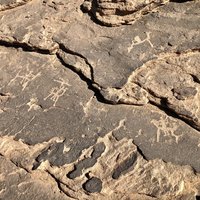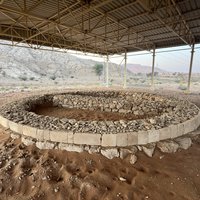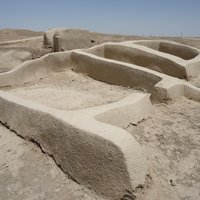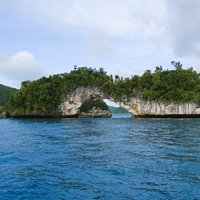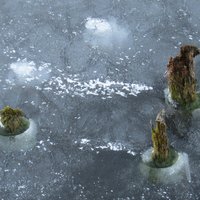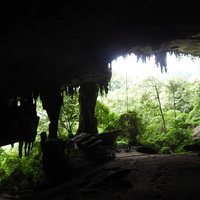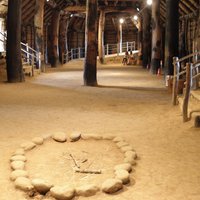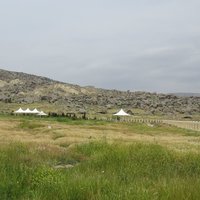Connected Sites
-
"Processes of desertification from the mid-Holocene altered the local environmental context and patterns of human settlement in these areas, and these changes are expressed in the numerous petroglyph panels and rich inscriptions." – "The rock art at Jabal Umm Sinman at Jubbah and Jabal Al-Major and Jabal Raat at Shuwaymis provide an exceptional testimony to the challenges of past societies in response to environmental catastrophes." (OUV)
-
"Criterion (iii): The rock art images cover a period of about 10,000 years. With the archaeological remains, they testify in a particularly lively manner to climate changes, changes in fauna and flora, and particularly to possibilities provided for farming and pastoral life (...)." (OUV)
-
"Its spectacular glacial landscapes with vast pastures and wooded valleys reflect climate change" (OUV statement)
-
"Criterion (viii):... The exquisite preservation of the fossil shells allows the analysis of their geochemical composition to identify ancient climatic and oceanographic signals, and to study in depth the causes of the mass extinction of life at the end of the Ordovician period." (OUV), "The O/S boundary interval was a period of profound change on Earth and the life it supported. (...) A generally prolonged "greenhouse" climate was punctuated by a glaciation that achieved its maximum in the late Ordovician (Hirnantian). This corresponds to the first recorded mass extinction event, which affected almost every marine organism." (IUCN Ev)
-
"Criterion (iii): .. the themes in the rock art reflecting the changing character of the environment and how they adapted to it." (OUV), "The cultures that created the massive corpora of petroglyphs and rock inscriptions at Hima present an outstanding record of human interaction with the environment where successive societies became highly vulnerable to irreversible changes in climate and aquifer level." (Nomination file, p. 6)
-
Crit iv: The geological, geomorphological and hydrological processes and features include alternations of dry and wet conditions while hydrological processes involve erosion and deposition of sediments and archaeological elements. These processes were largely driven by changes in palaeo-climatic conditions (OUV)
-
"Changes in water courses and climate change led to the eventual abandonment of the city in the early second millennium." (OUV statement)
-
"The settlements reflect distinctive responses to their local environment and their abandonment demonstrates the consequences of population growth and climate change impacting on subsistence in a marginal environment." (OUV statement)
-
Prehistoric Pile Dwellings
Austria, France, Germany, Italy, Slovenia, SwitzerlandInscribed: 201125817
"Criterion (v): ..The revealed archaeological evidence allows an unique understanding of the way these societies interacted with their environment, in response to new technologies, and also to the impact of climate change." (OUV)
-
"Criterion (v): The Niah Caves Complex is an outstanding example of very early human settlement and land use in the Southeast Asian region, and of human interaction with a changing environment during prehistoric times." (OUV). "The faunal and floral deposits that have been found in the caves indicate that the climatic conditions here have changed from favouring an open, dry forest to promoting a dense rainforest. During the Pleistocene, northern Sarawak experienced a dry climate with low rainfall and long dry seasons. By the end of the Pleistocene (11,700 BP), sea levels had begun to rise, along with temperatures and rainfall. This caused the vegetation, and consequently the fauna, to gradually change into the tropical rainforest ecosystems that exist today." (AB Ev)
-
Over a period of more than 10,000 years, the Jomon people continued hunter-fisher-gatherer lifeways without changing to an agrarian culture, adapting to environmental changes such as climate warming and cooling and the corresponding marine transgression and regression. (OUV)
-
"Criterion (iii): The rock engravings are an exceptional testimony to a way of life that has disappeared in the way they represent so graphically activities connected with hunting and fishing at a time when the climate and vegetation of the area were warmer and wetter than today." (OUV)

